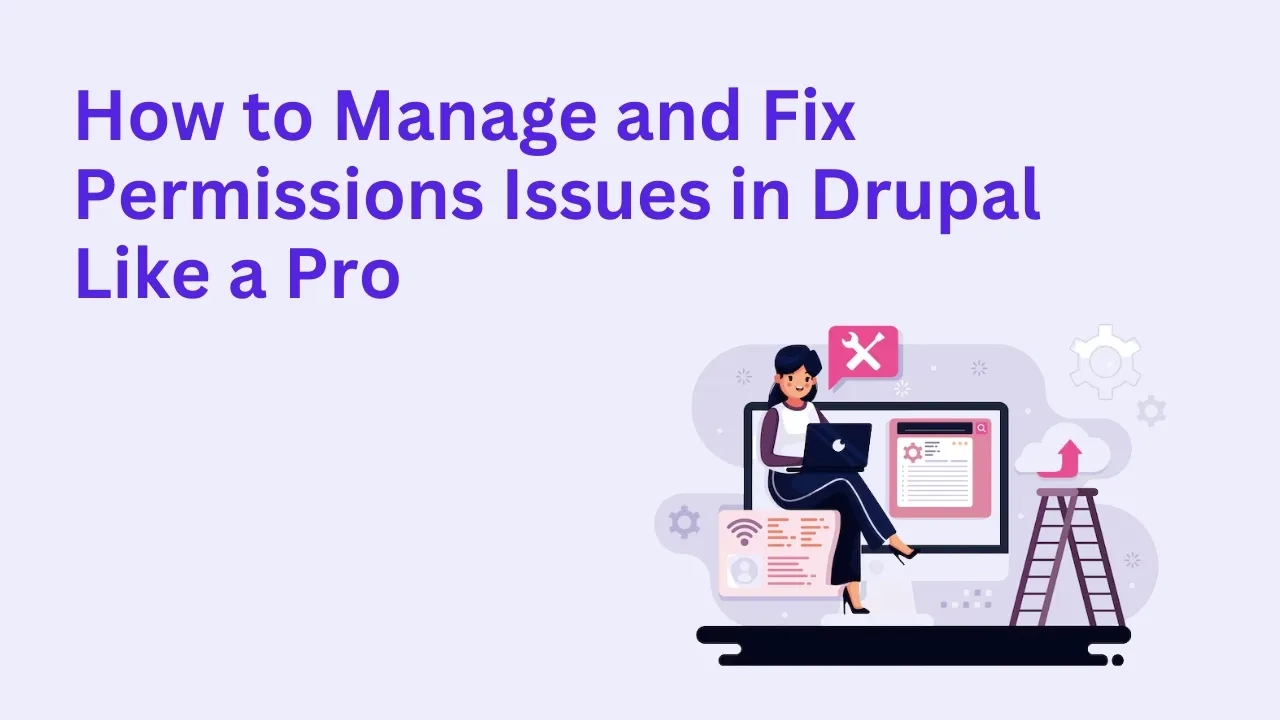How to Manage and Fix Permissions Issues in Drupal Like a Pro

When you’re working with Drupal, permission issues can create chaos for site admins, editors, and even your end users. Whether it’s accidental access denial or over-permissioned users, misconfigured roles can turn a stable website into a ticking time bomb. The good news? Drupal gives you full control over who can do what—you just need to know where to look and what to adjust.
Let’s walk through how to identify, manage, and resolve permission issues effectively.
Understand How Drupal Permissions Work
Drupal uses a Role-Based Access Control (RBAC) system. Every user is assigned to a role, and roles are granted permissions. The default roles are Anonymous (not logged in), Authenticated (logged in), and Administrator. You can also create custom roles tailored to your team’s needs.
Each role is assigned specific permissions such as "Create Article content," "Administer users," or "Access content." Problems start when:
- Permissions are too restrictive (users can’t perform basic tasks)
- Permissions are too broad (security and privacy concerns)
- Roles overlap or contradict each other
Audit Existing Roles and Permissions
Start by auditing your current setup:
- Go to People > Roles in the admin menu.
- Review each role and ask: What tasks should this role be able to perform?
- Navigate to People > Permissions and go through each module's permissions tab-by-tab.
Use a spreadsheet to document your ideal permissions matrix, especially for large teams.
Common Drupal Permission Pitfalls
1. "Access Denied" Errors
This typically happens when a user tries to view or edit content they aren’t allowed to. Look for:
- Missing "Access content" or "View published content" permissions
- Restrictive content-type permissions
2. Over-Permissioned Editors
Sometimes editors are granted admin-level access because it "just works." That’s risky. Create a dedicated Editor role with only the content-related permissions needed.
3. Custom Modules with Hidden Permissions
Some custom modules define permissions that are not obvious. Check for:
- Custom hooks implementing
hook_permission() - Unused or legacy permissions that still exist in the database
Use the Right Modules to Streamline Access Control
- Permissions by Term: Restrict access by taxonomy.
- Content Access: Granular access per content type.
- Role Delegation: Let trusted users assign roles.
- Workbench Access: Useful for editorial workflows.
Be mindful that using too many permission-related modules can create conflicts or confusion. Always test changes on a staging site.
Implement Least Privilege Access
Always follow the principle of least privilege: give users the minimum level of access they need to perform their tasks. This keeps your site secure, clean, and easier to maintain.
For example:
- An editor should not be able to install modules
- A content reviewer doesn’t need access to configuration settings
Set clear policies and review them regularly as your team grows or changes.
Permissions Best Practices Checklist
- ✅ Create custom roles based on actual responsibilities
- ✅ Remove default permissions not needed by custom roles
- ✅ Avoid using Administrator role as a shortcut
- ✅ Document all permission changes
- ✅ Test roles using test accounts before going live
When to Bring in an Expert
If you're facing ongoing access issues, tangled roles, or growing team complexity, it might be time to consult a Drupal professional. Our team has helped organizations untangle years of mismanaged permissions without disrupting day-to-day operations.
You can hire Drupal developers from us who specialize in backend architecture and secure user management.
Or if you’d like to speak directly to a tech lead about your specific permission issues, book a consultation today.
Fixing permissions in Drupal doesn’t have to be a headache. With the right approach and clear understanding, you can confidently manage roles and safeguard your website from accidental errors or security lapses.
Frequently Asked Questions
What causes permission issues in Drupal?
Permission issues usually stem from incorrect role configuration, missing module permissions, or the use of custom code without proper access checks.
How can I test what a specific user can access?
Use the Masquerade module to impersonate users and test their permissions without logging out of your admin session.
Is it safe to modify permissions on a live Drupal site?
It’s best to test all permission changes in a staging environment first. Always create backups before making significant updates.
What modules help with access control in Drupal?
Modules like Content Access, Workbench Access, and Permissions by Term provide fine-grained control, while Role Delegation helps with user management.
How often should I audit Drupal roles and permissions?
Ideally, perform audits quarterly or whenever your team grows, changes, or takes on new functionality that may require updated access levels.








